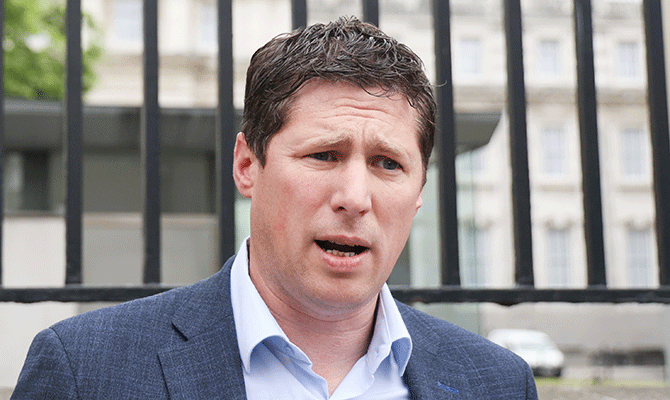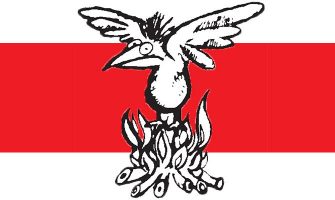
Matt Carthy
REPMUS IS an annual Nato exercise that takes place in Portugal’s Troia Bay. While there have been many congratulatory media reports about the Irish Naval Service’s recent involvement in the impounding of a cargo ship carry 2.2 tonnes of cocaine, there has been no mention publicly about Irish involvement in Repmus 23 in the same month. The full name of Repmus – Robotic Experimentation and Prototyping Augmented by Maritime Unmanned Systems – is quite the mouthful and you might not be much wiser as to what it is. Allow Goldhawk to elucidate.
Over 1,400 civilian and military personnel were involved in the event, with some of Nato’s most powerful commands taking part such as the Brussels-based Nato Defence Investment Division; the Nato Allied Maritime Command based in England; and the Nato Allied Command Transformation, which operates from Virginia, US.
A Nato fact sheet about Repmus 23 says that, alongside 15 Nato allies, participating nations included “partners Sweden and Ireland”. The 17 nations supplied over 90 maritime unmanned systems including more than 35 “unmanned underwater vehicles”, over 15 “unmanned surface vehicles” and 40-plus “unmanned air vehicles” – in other words underwater drones, drone boats and drones. Ten warships from Britain, France, Spain, Portugal and Italy also took part.
The factsheet adds that activities were “coordinated from a combined Maritime Experimentation and Operations Centre (MEOC) in Troia and tested in a number of fictitious warfighting scenarios to achieve specific objectives such as Anti-Submarine Warfare, Maritime Interdiction Operations, Maritime Surveillance and Intelligence Collection, Force Protection and Amphibious Operations”.
The war in Ukraine has highlighted the key role underwater drones and drone boats play in modern warfare. Ukraine has carried out over a dozen such attacks on Russian ships, including the Ivan Khurs; the naval base in Sevastopol; Novorossiysk harbour; and the Kerch Bridge. In the last week of September, Ukraine released footage of a new 20-ft-long underwater drone, the Marichka, which can operate to a significant depth and also has a range of almost 1,000 km.
Last June Sinn Féin’s spokesperson on foreign affairs and defence, Matt Carthy, received a written response from Tánaiste and defence minister Micheál Martin regarding the status of Ireland’s participation in Nato’s Partnership for Peace (PfP). The response was heavy on platitudes but light on detail, claiming: “Participation in PfP is seen as fundamental to Ireland being able to meet its obligations in providing professional peacekeepers for international crisis management and peacekeeping operations.”
In an answer to People before Profit TD Gino Kenny in March, Martin explained how his department was in the process of agreeing a new partnership programme with Nato for 2023-2027, describing Ireland’s participation in the PfP in purposefully vague terms: “These could, for example, include areas such as cyber and hybrid, enhancing resilience and improved maritime situational awareness.”
This contrasts with the language used by British Royal Navy Commander Michael Hutchinson, who brought his experimental vessel, the Patrick Blackett, to Repmus 23. Hutchinson argued that at the event you learn “how you support those high-end warfighting assets with cheaper, cost-effective platforms that still offer a lot of military output”.
BAE Systems and Malloy Aeronautics were also excited about Repmus 23 – “During the multinational exercise, the demonstrator successfully released an inert Sting Ray training variant anti-submarine torpedo during a flight mission at sea for the first time” – while Israel Aerospace Industries was delighted to demonstrate its BlueWhale underwater drone in Troia Bay.
Does the Tánaiste still use the term ‘non-lethal’ to describe such Irish participation in Nato operations?




















